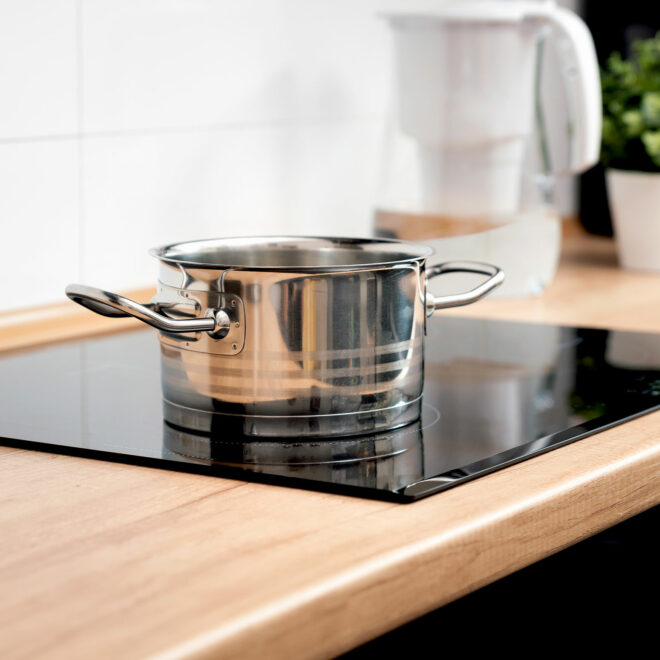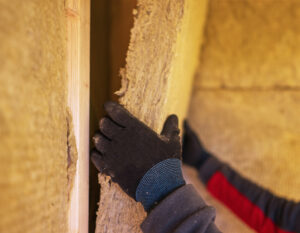Today, we will embark on a culinary journey that’s as exciting as it is enlightening. We’re going to explore the world of the induction hob, a marvel of modern kitchen technology that’s been gaining popularity at a rapid pace. If you’re a homeowner who’s been contemplating a kitchen upgrade or simply curious about the latest in cooking technology, this blog post is for you. So, buckle up and get ready to delve into the fascinating world of induction hobs!
What is an Induction Hob?
An induction hob, also known as an induction cooktop, is a cooking appliance that uses magnetic induction to heat your cookware. Unlike traditional gas or electric hobs, an induction hob doesn’t heat up itself. Instead, it uses electromagnetic energy to generate heat directly within the cookware. This innovative technology was first introduced in the 1970s, and since then, it has evolved significantly, becoming more efficient, safer, and more user-friendly.
How Does an Induction Hob Work?
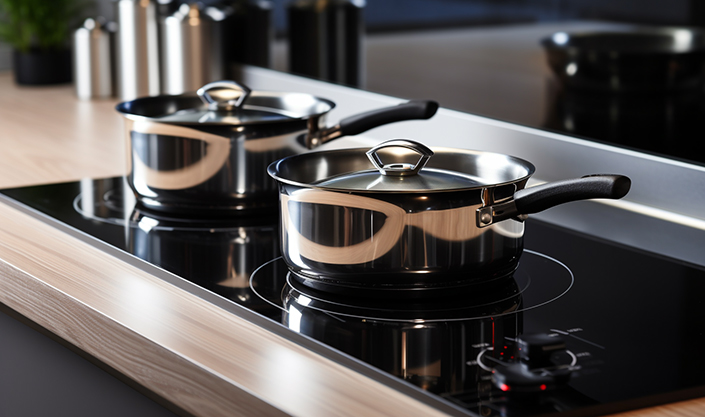
Now, let’s delve into the science behind induction hobs. At the heart of an induction hob is a coil of copper wire. When you switch on the hob, an alternating electric current is passed through this coil, creating a dynamic magnetic field. When you place a pot or pan made of ferrous (magnetic) material on the hob, this magnetic field induces electric currents, known as “eddy currents”, in the pot. These eddy currents flow in a circular path, generating resistive heat, which in turn heats up the food in the pot.
Compared to traditional gas or electric cooktops, induction hobs are incredibly efficient. They transfer energy directly to the cookware, reducing heat loss and allowing for faster and more precise cooking. Plus, since the hob itself doesn’t heat up, it’s safer and easier to clean!
Why Choose an Induction Hob?
So, why should you consider switching to an induction hob? Let’s explore the benefits:
- Energy Efficiency: Induction hobs are champions when it comes to energy efficiency. They use less energy than traditional gas or electric hobs, helping you save on your energy bills and reduce your carbon footprint.
- Speed and Precision: Induction hobs heat up your cookware almost instantly, allowing you to boil water or cook your favourite dishes faster. Plus, they offer precise temperature control, giving you the flexibility to simmer, sauté, or sear with pinpoint accuracy.
- Safety Features: Since the hob itself doesn’t heat up, there’s less risk of burns. Plus, many induction hobs come with safety features like a child lock, automatic switch-off, and residual heat indicators.
- Easy Cleaning: With a smooth, flat surface and no open flame or heated coils, induction hobs are a breeze to clean. Just a quick wipe-down, and you’re done!
Understanding the Features of an Induction Hob
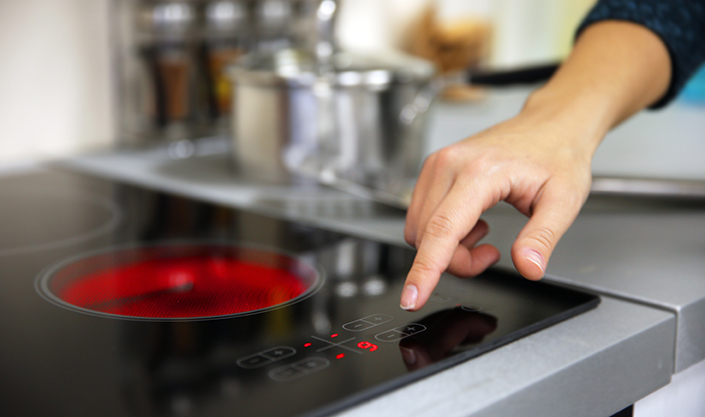
Induction hobs come packed with a host of features designed to enhance your cooking experience. Let’s take a closer look:
- Power Settings: Induction hobs offer a wide range of power settings, allowing you to adjust the heat level to suit your cooking needs. Whether you’re simmering a delicate sauce or searing a steak, you’ll have the perfect heat setting at your fingertips.
- Temperature Settings: With precise temperature control, induction hobs let you cook your dishes to perfection. You can set the exact temperature you need, ensuring consistent results every time.
- Cooking Zones: Many induction hobs feature multiple cooking zones, giving you the flexibility to cook several dishes at once. Some even offer a bridging function, allowing you to combine two zones for larger pots and pans.
- Wi-Fi Enabled Features: Some high-end induction hobs come with Wi-Fi connectivity, allowing you to control your hob from your smartphone or tablet. You can adjust the heat, set timers, and even monitor your cooking progress from anywhere in your home!
Choosing the Right Cookware for Your Induction Hob
To make the most of your induction hob, you’ll need the right cookware. Induction hobs require pots and pans with a flat base made of ferrous (magnetic) metal. Stainless steel and cast iron are excellent choices. To check if your existing cookware is induction-compatible, simply see if a magnet sticks to the bottom. If it does, you’re good to go!
How to Use and Maintain an Induction Hob
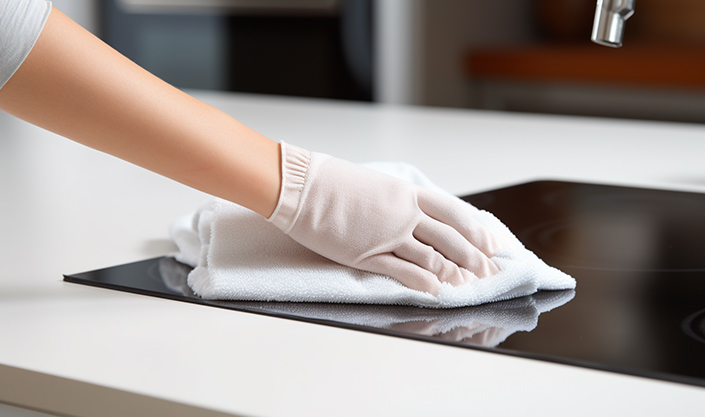
Using an induction hob is as easy as pie. Just place your induction-compatible cookware on the hob, select your desired power or temperature setting, and start cooking! Remember, the hob will only heat up the area that comes into contact with the cookware, so make sure your pot or pan is centred on the cooking zone.
Maintaining an induction hob is equally straightforward. Since the hob doesn’t heat up, food spills won’t burn onto the surface, making cleaning a breeze. After each use, wipe down the hob with a damp cloth or sponge. Avoid using abrasive cleaners or scouring pads, as they can scratch the surface.
Induction Hobs: A Smart Investment for Your Home
While induction hobs may be more expensive upfront than traditional gas or electric hobs, they’re a smart investment in the long run. Their energy efficiency can help you save on your energy bills, and their durability ensures they’ll last for years to come. Plus, they can add a touch of modern elegance to your kitchen, boosting your home’s value.
Conclusion
Induction hobs are a game-changer in the world of home cooking. With their efficiency, precision, safety, and ease of use, they offer a superior cooking experience that’s hard to beat. So, why not give induction cooking a try? You might just fall in love with it!
If we’ve convinced you about induction hobs, we’ve got great news for you! Yavolo will soon be stocking a wide range of induction hobs. Whether you’re looking for a basic model or a high-end hob with all the bells and whistles, you’ll find it right here on the first bundle-powered marketplace. Stay tuned for more updates!
FAQs
- Can I use my existing cookware on an induction hob?
- You can use any cookware that’s made of a magnetic material, such as stainless steel or cast iron. To check if your existing cookware is compatible, simply see if a magnet sticks to the bottom.
- Is an induction hob safe to use?
- Yes, induction hobs are very safe. They don’t heat up themselves, reducing the risk of burns. Plus, they come with safety features like child lock and automatic switch-off.
- How do I clean an induction hob?
- Cleaning an induction hob is easy. Just wipe it down with a damp cloth or sponge after each use. Avoid using abrasive cleaners or scouring pads, as they can scratch the surface.
- Does an induction hob use a lot of electricity?
- While an induction hob uses electricity, it’s more energy-efficient than a traditional electric hob. It transfers energy directly to the cookware, reducing heat loss and saving energy.
- Can I use an induction hob if I have a pacemaker?
- Most people with pacemakers can safely use an induction hob. However, it’s always a good idea to check with your doctor or the pacemaker manufacturer first.
For more amazing blogs on a variety of topics, head to our home page.

